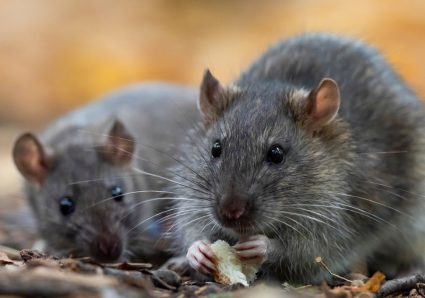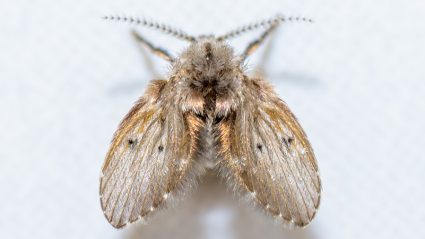
Fleas are a nuisance that no pet owner wants to deal with. They can cause severe discomfort in animals and can also pose health risks to humans. But where are fleas most common? This comprehensive guide will provide an in-depth look at the environments and conditions where fleas thrive, as well as prevention methods to help keep these pesky parasites at bay.
Fleas are most common in warm, humid environments, particularly during spring and summer months. They are often found in shady, moist areas both indoors and outdoors. Geographically, they are more prevalent in coastal regions, especially in tropical and subtropical areas, and in the United States, the southern states and California have higher flea populations. Pets, particularly dogs and cats, are common hosts for fleas.
Environments Where Fleas Thrive
Fleas thrive in warm, humid environments. They are more common during spring and summer months when temperatures range from 70-85°F (21-29°C) and humidity levels hover around 70%. Fleas prefer moist, shady areas, both indoors and outdoors. Outdoors, they can be found in high grass, sand, sheds, and debris. Indoors, they are most likely to be found in carpets, upholstered furniture, and pet bedding.
Geographic Locations Prone to Flea Infestations
Geographically, some areas are more prone to flea infestations than others. Coastal regions, mainly in tropical and subtropical areas, are hotspots for these pests. In the United States, states with milder climates like those in the South and California are more likely to have flea problems than states with colder winters. According to a study by PetArmor, the top 5 states for dogs with fleas are Arkansas, Florida, South Carolina, Alabama, and Oregon. For cats, the top 5 states are Oregon, Washington, Florida, California, and Alabama.
The Impact of Seasons on Flea Infestation
Different seasons have varying impacts on flea presence and reproduction. Fleas are most active during the warmer and more humid months of spring, summer, and fall. However, flea eggs, pupae, and larvae can survive in hiding spots like attics, floorboards, and furniture throughout the year, even during harsh winters. Climate change has also extended the flea season, as warmer temperatures for longer periods result in a longer ectoparasite season.
Animals and Flea Infestations
Certain animals, particularly those with fur, increase the likelihood of flea infestations. Pets such as dogs and cats are common hosts for fleas, but they can also infest wild animals like rabbits, rats, and raccoons.
Signs of Flea Infestations
Signs of flea infestations include excessive scratching by pets, red and irritated skin, flea dirt, flea eggs, visible fleas, pale gums, hair loss, and flea bites on humans. To check for fleas in your yard, walk through the grass wearing tall white socks. Fleas will jump onto the socks, making them visible.
Preventing Flea Infestations
Preventing flea infestations involves regular cleaning and grooming. Vacuum carpets and cushions regularly, clean pet bedding frequently, limit pet exposure to wild animals, and bathe and brush pets regularly. In your yard, mow the lawn frequently, avoid over-watering, and treat dog runs with insecticides.
Climate Change and Flea Prevalence
Climate change has increased the prevalence of fleas in certain areas due to its effects on temperature, humidity, and precipitation. These factors directly impact flea development, survival, behavior, and reproduction. As the climate warms, flea populations may expand into new regions.
In conclusion, fleas are most common in warm, humid environments and on certain animals. However, they can be found in many regions and climates. By understanding where fleas are most common, we can take steps to prevent infestations and protect our pets and homes.
Frequently Asked Questions
What are some effective flea treatments for pets?
There are several effective flea treatments for pets. These include oral medications, spot-on treatments, flea shampoos, and flea collars. Your vet can recommend the most suitable treatment for your pet.
Can fleas infest humans?
Yes, while fleas prefer to feed on animals with fur, they can and do bite humans. However, they cannot live on humans as they do on animals.
Can fleas survive in cold weather?
Fleas cannot survive in extremely cold weather outdoors. However, flea eggs, larvae, and pupae can survive indoors in warm hiding spots during cold weather.
What diseases can fleas transmit?
Fleas can transmit a number of diseases to both pets and humans. These include cat scratch disease, murine typhus, and the plague. Fleas can also transmit tapeworms to pets.
Can fleas fly?
No, fleas cannot fly. They move by jumping. In fact, fleas are known for their exceptional jumping ability. They can jump up to 100 times their body length.
How long do flea infestations typically last?
Without treatment, flea infestations can last a long time. The lifecycle of a flea can be as short as a few weeks or as long as several months, depending on the conditions. With effective treatment, fleas can be eliminated within a few weeks.
What are some natural flea repellents?
Some natural flea repellents include certain essential oils (like lavender, peppermint, and lemongrass), apple cider vinegar, and diatomaceous earth. However, natural repellents may not be as effective as treatments recommended by a vet. Always consult your vet before trying a new flea treatment.












